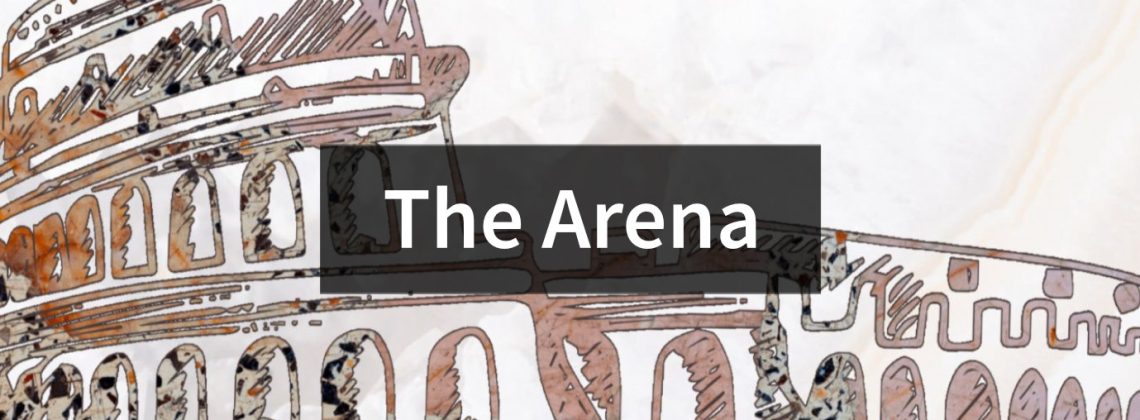

I originally wrote this as an update for my Substack–so that people who might not read Current regularly would see this news. But on second thought, maybe this is appropriate to cross-post here as well, even for those who know the news already.
Earlier this week, John Fea, the Executive Editor of Current, where I have had the honor of serving first as Book Review Editor and more recently as Managing Editor, posted this sad announcement: the three founding editors of Current have made the difficult decision to end the magazine. Our final date of publication will be April 4th—the fourth anniversary of the magazine’s launch. So, this moment is not the end yet, but the end is in sight. Every day of editing and publishing now is a countdown to the end. It hurts.
I myself only learned the news on Monday afternoon. The night before, though, I came across another writer’s lament for the legendary magazine Books & Culture, now gone for almost a decade. Little did I know what was coming for the beloved little magazine that has been a part of my life for three and a half years. It will remain archived on the internet for years to come, but it will become an archive. Preserved in stone, never changing, for as long as the domain remains.
This idea of old domains preserved as the final vestiges of departed institutions brings to mind glorious ruins. Castles crumbling down, their beauty somehow made even more intense from the forests that are inexorably yet patiently reclaiming their walls for their own domain over the course of centuries. Greek and Roman walls, partially collapsed but still standing, witnesses of great cities and civilizations millennia ago. Ancient temple pillars and arches—all that remains of something magnificent. Yet there is still beauty in the fragility such brokenness manifests; it is a reminder of past greatness.
Such is the fate of all man-made institutions—mighty empires, buildings, and yes, of course, magazines. Why would we have ever thought otherwise? Perhaps because we love fragile things so much that we fail to see their fragility for a time. We forget in the moment of flourishing that these things too are doomed to become glorious ruins in the future.
Yes, writers can appreciate the magazines they write for—it’s a joy to have a welcoming space for one’s ideas and writing, and your life is better with editors in it (and Current writer Philip D. Bunn kindly noted this as well in reflecting on the magazine’s closure earlier this week).
As an editor, though, you have a different perspective, because it’s not about you—it’s about something bigger and more exciting. The love for ideas and for the people who bring these ideas into the world grows more intense, as you think about the greater vision into which every essay you invite and edit must fit. You get to work with talented writers, midwifing their ideas at times, helping them in some cases develop the piece into something clearer, more beautiful. And maybe you diagram some (many) sentences in your mind, as you broker the (sometimes) uneasy peace between writers’ ideas and the complex grammatical requirements of the English tongue. You yourself grow as a writer too in the process. It is no coincidence that some of the best writers I know are also seasoned editors.
My gratitude for Current has to do with this love for both the wonderful people I was privileged to work with and the ideas we got to discuss and edit in the process. What a glorious gift this has been for me at the stage in my professional life when I was at my most discouraged. I am so grateful that Current was my main intellectual home since walking away from academia.
I had known John Fea, Jay Green, and Eric Miller solely through their scholarly work before Current—I had read Confessing History sometime after coming to Christ at age thirty, as I was trying to understand what it meant to be a historian and a Christian in the same body and mind—and soul. Current’s project, bringing together conversations about history, culture, art, books, and above all the American democracy, felt to me as the work of restoring the soul of our society no less (and perhaps more) than of individuals.
I am really going to miss this time of working with John, Jay, and Eric, and also with fellow editor Robert Erle Barham, a gifted creative writer. I am looking forward to Robert Erle’s novel in progress, and perhaps the conclusion of Current will give him more time to work on it. But my greatest debt of all, hands down, is to Eric Miller, who has been a kind and patient mentor and friend over the past several years—and a gifted writer whose work is always an inspiration to read. I have said in the past that reading Eric’s work is a masterclass in beautiful writing. I stand by this statement.
Still, the sad reality is that while the mantra “small is beautiful” resonates with so many, and Current did (and is still doing, until April 4th!) truly beautiful work, small things are much more fragile than bigger ones. Little magazines are more likely to struggle, whereas larger ones (especially if they are run by an umbrella organization) have a more stable existence. Much of this comes down to resources—as it so often does. Current published incredible quality on a shoestring budget. Should we boast about such work, though, if it ends up being unsustainable at the end?
I keep thinking about little magazines as a public good—meaning, these are entities that benefit the American mind and spirit. But if this work is for the good of the public, how do we ensure its continued existence? I do not have good answers at the moment.